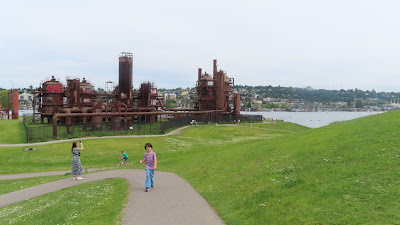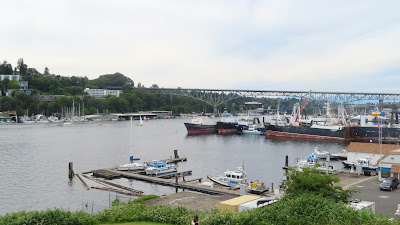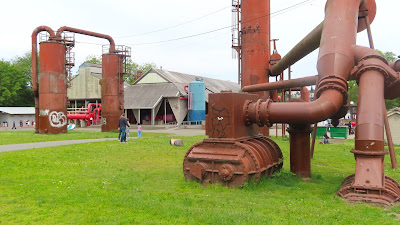Sunday, June 16, 2024
Just monochrome wild grasses as landscape design
Gas Works Park, Seattle
The beauty of Button Weeds or Golden Buttons "weed"
Button Weeds (Cotula Coronopifolia) also known as Golden Buttons. Personal archives, June 2024.
Though Button Weeds (also known as Golden Buttons, Water Buttons, Brass buttons) are consider weed, they look so pretty next to the lake or ponds edges, in a low mat formation in a naturalistic landscape (garden). I have taken my pictures at the Huntington Beach Central Park, where they bloom next to the local lake under full sun.
This perennial plant is native from South Africa and it is also found in North America, South America and Asia. It reproduces through seeds. The appearance is of button-like tiny flowers, yellow or white, with lance-shaped leaves. The tiny flowers form a cluster that cannot be appreciated from afar. I have taken some of these photos with a 300 mm macro lens, which helped me understand their morphology.
The seeds are hard and can persist in the ground for long years. Hence the plant's duration as a weed or better said, as a lush ground cover.
Wednesday, May 15, 2024
Cactus garden at the South Coast Botanic Garden
Maybe the only critical part is that looking at the cactus garden from the road curve, we perceive it as isolated and not part of a "desert".
Friday, May 10, 2024
Adding meaning to trees, humanizing trees
The Rainbow Bridge in Long Beach CA
Sound Atmosphere After the Wildfires
The silhouette of a crow standing on the remnants of a house in Altadena. Photo by Myriam Mahiques, March 2025. Each neighborhood an...

-
I have been navigating the City of Monrovia web page, looking for contact phones, and I came across with this interesting information abou...
-
The Norton Simon Museum is celebrating its 50th Anniversary this year and it deserves a post. I visited this Museum in 2023 with my son, wh...
-
Entering Gas Works Park, Seattle. All photos in this post belong to my personal archives. June 2024. I had read about Gas Works Park in a Th...




























































